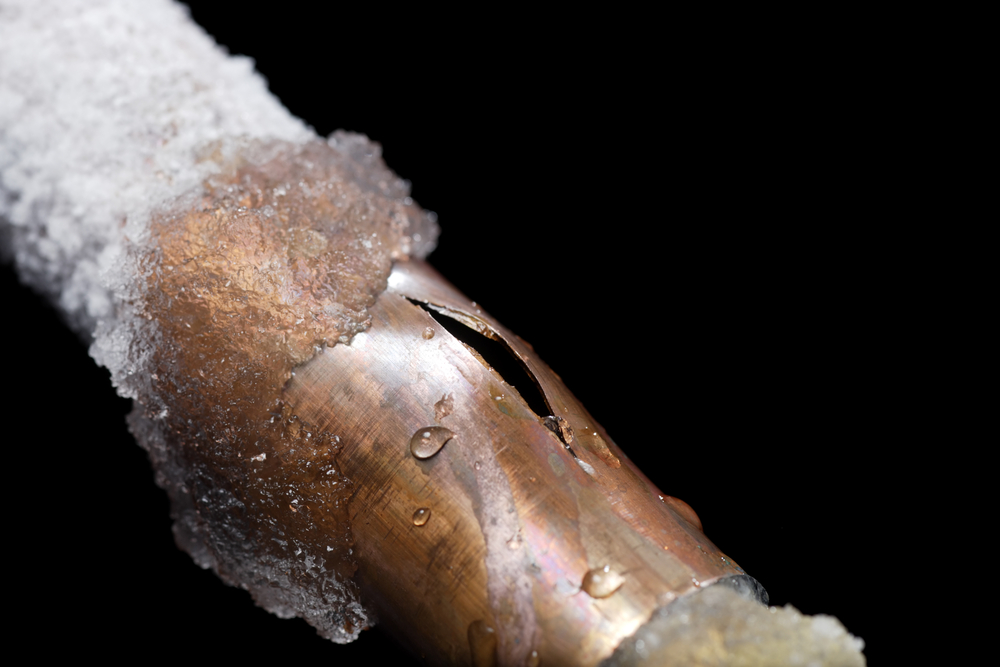Essential Methods for Preventing Frozen Plumbing in Cold Weather
Essential Methods for Preventing Frozen Plumbing in Cold Weather
Blog Article
On this page underneath you can discover some really good content concerning How To Avoid Freezing Pipes.

Winter can damage your pipes, especially by freezing pipes. Below's how to stop it from taking place and what to do if it does.
Intro
As temperatures drop, the threat of frozen pipelines rises, potentially causing costly repair services and water damage. Recognizing how to avoid frozen pipes is crucial for home owners in cool climates.
Avoidance Tips
Insulating vulnerable pipelines
Cover pipelines in insulation sleeves or use warm tape to protect them from freezing temperature levels. Focus on pipelines in unheated or outside areas of the home.
Heating methods
Keep interior spaces appropriately heated up, particularly areas with pipes. Open up cabinet doors to enable warm air to flow around pipelines under sinks.
Exactly how to recognize icy pipelines
Seek reduced water flow from faucets, unusual smells or noises from pipelines, and visible frost on exposed pipes.
Long-Term Solutions
Structural modifications
Think about rerouting pipes away from exterior walls or unheated locations. Include added insulation to attics, cellars, and crawl spaces.
Updating insulation
Invest in top quality insulation for pipelines, attic rooms, and wall surfaces. Correct insulation aids keep regular temperatures and reduces the threat of icy pipelines.
Safeguarding Exterior Pipes
Yard hose pipes and exterior taps
Detach and drain yard hoses before wintertime. Mount frost-proof spigots or cover outside faucets with shielded caps.
Comprehending Icy Pipes
What triggers pipelines to freeze?
Pipelines ice up when exposed to temperatures listed below 32 ° F (0 ° C) for prolonged durations. As water inside the pipelines freezes, it increases, taxing the pipe wall surfaces and potentially creating them to break.
Risks and damages
Frozen pipelines can cause water system disruptions, home damages, and expensive repairs. Ruptured pipelines can flooding homes and trigger extensive architectural damages.
Indications of Frozen Pipeline
Identifying frozen pipes early can avoid them from rupturing.
What to Do If Your Pipes Freeze
Immediate actions to take
If you presume icy pipes, keep faucets open up to ease pressure as the ice melts. Use a hairdryer or towels taken in warm water to thaw pipelines gradually.
Conclusion
Avoiding icy pipelines requires positive measures and fast feedbacks. By understanding the causes, signs, and preventive measures, house owners can secure their pipes during cold weather.
5 Ways to Prevent Frozen Pipes
Drain Outdoor Faucets and Disconnect Hoses
First, close the shut-off valve that controls the flow of water in the pipe to your outdoor faucet. Then, head outside to disconnect and drain your hose and open the outdoor faucet to allow the water to completely drain out of the line. Turn off the faucet when done. Finally, head back to the shut-off valve and drain the remaining water inside the pipe into a bucket or container. Additionally, if you have a home irrigation system, you should consider hiring an expert to clear the system of water each year.
Insulate Pipes
One of the best and most cost-effective methods for preventing frozen water pipes is to wrap your pipes with insulation. This is especially important for areas in your home that aren’t exposed to heat, such as an attic. We suggest using foam sleeves, which can typically be found at your local hardware store.
Keep Heat Running at 65
Your pipes are located inside your walls, and the temperature there is much colder than the rest of the house. To prevent your pipes from freezing, The Insurance Information Institute suggests that you keep your home heated to at least 65 degrees, even when traveling. You may want to invest in smart devices that can keep an eye on the temperature in your home while you’re away.
Leave Water Dripping
Moving water — even a small trickle — can prevent ice from forming inside your pipes. When freezing temps are imminent, start a drip of water from all faucets that serve exposed pipes. Leaving a few faucets running will also help relieve pressure inside the pipes and help prevent a rupture if the water inside freezes.
Open Cupboard Doors
Warm your kitchen and bathroom pipes by opening cupboards and vanities. You should also leave your interior doors ajar to help warm air circulate evenly throughout your home.

We hope you liked our piece about How to prepare your home plumbing for winter weather. Thanks a ton for spending some time to read through our short article. Appreciated our post? Please share it. Help another person check it out. We enjoy your readership.
Estimate Report this page